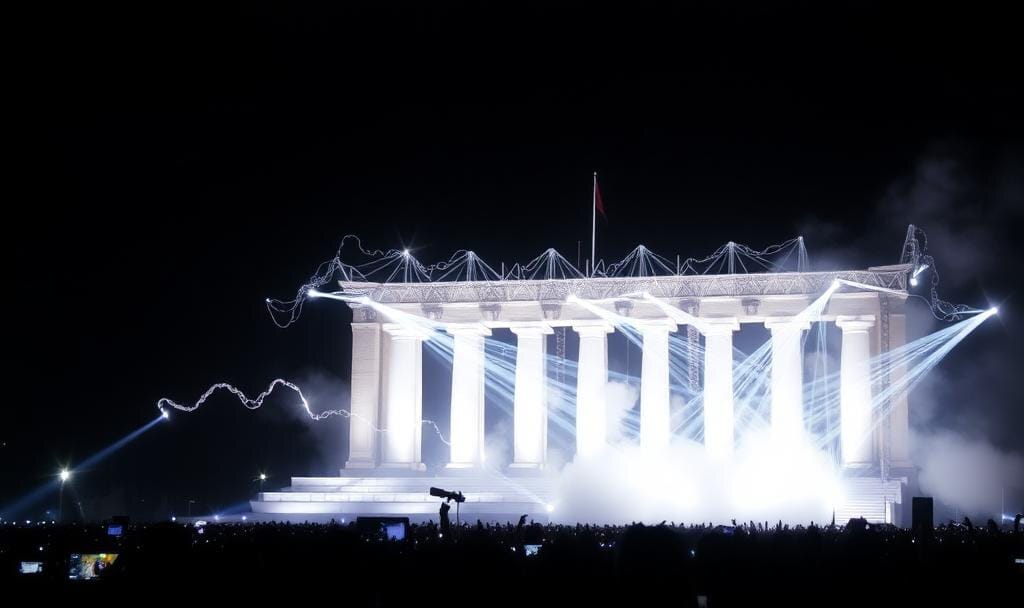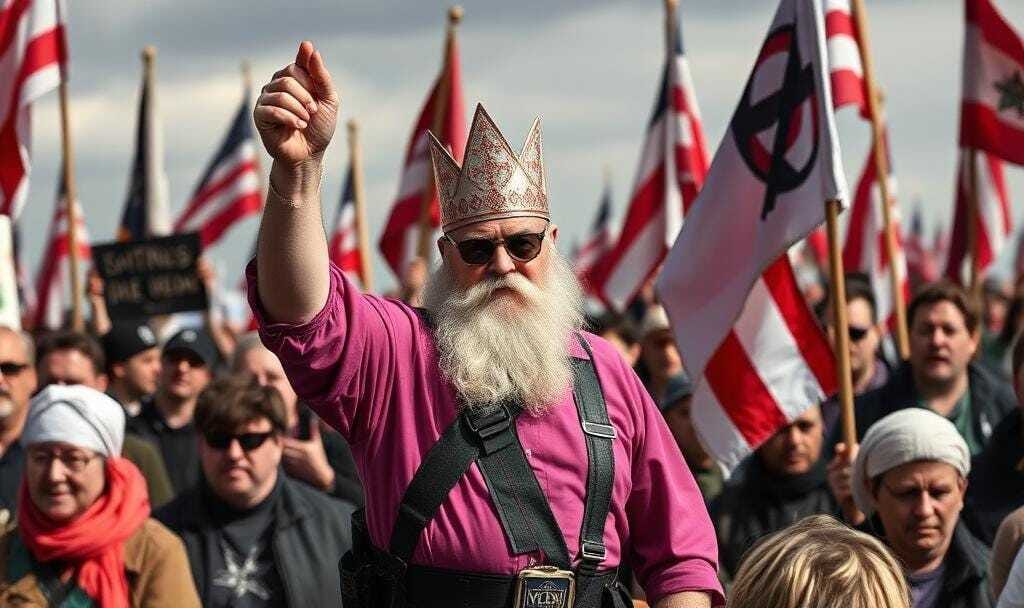The term “white power” refers not to a monolithic entity but to a diffuse, transnational ideological movement rooted in white supremacy, racial nationalism, and anti-egalitarianism. This paper seeks to define the diverse actors who constitute the White Power Movement (WPM), exploring its hierarchical structures, operational methodologies, and evolving ideological tenets. We argue that the WPM’s “who” is complex, spanning traditional, organized hate groups (e.g., Neo-Nazis, KKK), decentralized online terrorist cells, and a sophisticated network of intellectual and political propagandists who contribute to an environment of “stochastic terrorism.” The contemporary WPM is characterized by its adaptability, leveraging the digital sphere for radicalization and operating under the strategic doctrine of “leaderless resistance,” making it a pervasive and evolving threat to global security and democratic institutions.
I. Introduction and Defining Scope

The concept of “white power” emerged prominently in the latter half of the 20th century as both a rallying cry and an ideological umbrella for militant groups dedicated to maintaining or establishing white racial dominance. While often conflated with “white supremacy”—the underlying belief in the superiority of the white race—”white power” specifically denotes the active, organized, and often violent political and militant mobilization to achieve this supremacy.
The actors within this movement are heterogeneous, unified primarily by a core set of ideological precepts: racial purity, virulent antisemitism, anti-immigrant sentiment, and the belief in an impending “White Genocide” or the “Great Replacement.” By analyzing the WPM through a sociological and criminological lens, this paper will categorize the key players, illustrate their interconnectedness, and trace the evolution of their operational capacity, particularly in the shift from visible, structured organizations to clandestine, digitally-networked cells.
II. The Core Ideology: The Doctrine of Racial Nationalism

To understand “who” the white power movement is, one must first grasp its foundational ideas, which serve as the ideological glue binding disparate groups.
A. The Supremacist and Separatist Imperative
All actors within the WPM adhere to the premise that the white race is culturally, intellectually, and biologically superior. This belief historically manifested in overt demands for segregation, but modern movements often articulate this through calls for racial nationalism—the establishment of ethnostates (e.g., an all-white state in North America or Europe) where non-white populations are excluded or subjugated (Blee, 2017).
B. Antisemitism and the Conspiracy of the Other
Antisemitism remains the central organizing principle of the WPM (Poliakov, 1974). White power adherents universally subscribe to the belief that a clandestine, powerful Jewish cabal controls media, finance, and government, actively working to orchestrate “White Genocide” through policies like multiculturalism, open borders, and miscegenation. This conspiracy theory serves to externalize blame and justify violence against both Jewish communities and minority groups perceived as tools of this cabal.
C. The Great Replacement and Accelerationism

Modern white power terrorism is heavily influenced by the “Great Replacement” conspiracy theory, which posits that non-white immigrants, often facilitated by “globalist elites,” are deliberately moving into white-majority countries to erase white culture and population (Nytagodien & Van Der Haar, 2020). This fear has spurred the rise of accelerationism, a radical tactic urging followers to commit acts of violence and terror to destabilize society and hasten the collapse of the current political order, thereby clearing the way for a white ethnostate. Lone-actor terrorists in Christchurch (2019) and Buffalo (2022) explicitly cited this doctrine.
III. Typologies of the White Power Actors
The “who” of the WPM can be stratified into four operational and functional categories, ranging from traditional institutions of hate to contemporary online agitators.
A. Traditional Organized Structures
These groups represent the historical face of the WPM, characterized by visible symbols, defined hierarchies, and formalized membership criteria.
Ku Klux Klan (KKK): While drastically diminished since its 20th-century peak, various independent Klans continue to function, preserving the legacy of ritualism, terror against racial minorities, and Christian Identity theology (Sims, 2011).
Neo-Nazis and Neo-Fascists: These groups explicitly embrace the symbols and ideological tenets of the Third Reich, focusing on militarism, racial purity, and fervent antisemitism. Groups like the National Socialist Movement (NSM) maintain a physical presence and attempt to stage demonstrations.
Hate-Rock and Skinhead Subcultures: These actors serve as an entry point for youth radicalization, utilizing music (e.g., ‘Oi!’, ‘Hatecore’) and specific fashion to transmit ideology and build community among adherents (Kaplan, 2016).
B. Modern, Clandestine, and Transnational Groups
Following crackdowns on overt hate organizations in the late 20th century, the WPM adopted strategies of secrecy and decentralization. These groups are often more extremist, embracing violence and terrorist tactics.
Use AI to Automatically Write Content!
Watch on Styafiya Speaks
Use AI to Automatically Write Content!
Leaderless Resistance Cells: Inspired by the writings of Louis Beam, many modern white power groups operate in small, autonomous cells—or as individuals—to make infiltration difficult. Examples include Atomwaffen Division (AWD) and The Base, which promote militant training, apocalyptic fantasies, and preparation for a race war. These groups are often transnational, with affiliates across North America, Europe, and Australia.
The “Alt-Right” and White Nationalist Think Tanks: This category includes highly educated, often media-savvy individuals who sanitize white supremacist ideology, framing it as “race realism” or “identity politics for white people.” Figures such as Richard Spencer or organizations like VDARE disseminate sophisticated propaganda, attempting to infiltrate mainstream conservative politics and provide intellectual cover for extremist beliefs (Hawley, 2017).
C. The Digital Radicalizers and Propagandists
The digital sphere is arguably the most critical component of the modern WPM. The “who” here includes the anonymous users of extremist forums (e.g., 8chan, Telegram) who create and disseminate memes, manifestos, and propaganda that foster radicalization.
Content Creators: Individuals who produce podcasts, video essays, and social media commentary that subtly (or overtly) introduce white power talking points (often termed “red-pilling”) to vulnerable audiences.
Encrypted Network Facilitators: Individuals who manage private chat channels used for operational planning, vetting new recruits, and sharing resources on bomb-making, weapons, and militant training.
D. The Lone-Actor Terrorist
The most lethal contemporary component of the WPM is the lone actor—the individual radicalized entirely online, often subscribing to the “accelerationist” ideology, who plans and executes attacks without direct organizational oversight.
These individuals transition from being consumers of white power ideology to becoming active combatants, often publishing a manifesto detailing their racial motivation and their adherence to the Great Replacement theory before or during their attack (e.g., Oslo 2011, El Paso 2019). Their actions are often celebrated posthumously by the wider WPM, generating a cycle known as stochastic terrorism—the ideologically motivated use of broad, public messaging to incite random acts of violence by unstable or extremist individuals.
IV. Operational Dynamics: The Transnational and Decentralized Threat

The white power movement has transcended national borders, creating a global network of ideological and tactical collaboration.
A. Globalized Identity and Symbology
The WPM utilizes shared symbols (the Black Sun, 14 Words, numerical codes like 88) that are recognized globally, allowing adherents from different countries to signal affiliation and ideological alignment without direct verbal communication. The manifestos of lone actors frequently reference global white supremacist figures and events, demonstrating a shared, transnational pantheon of hate.
B. Leaderless Resistance and Organizational Resilience
The strategic adoption of “leaderless resistance” has fundamentally altered how the WPM operates. Where the arrest of a single national leader might once have crippled a Klan chapter, modern white power networks are highly resilient. Because cells are autonomous and recruitment is often handled by self-starters online, the suppression of one nexus simply leads to the rapid formation of another, making counter-terrorism efforts exceedingly difficult (Kaplan, 2013).
C. The Permeation of Mainstream Politics
A significant operational shift involves attempts by white power actors to move from the fringes into the political mainstream, often by leveraging populist anger. By adopting coded language (e.g., “globalists,” “cultural Marxism”) and focusing on issues like immigration and cultural decline, WPM operatives attempt to normalize core racial grievances and influence public policy and discourse.
The answer to the question “Who is white power?” is multifaceted and dynamic. It is a complex ecosystem encompassing not just the historical figures in robes and hoods, but also sophisticated online propagandists, accelerationist terrorist cells, and well-funded white nationalist think tanks.
The modern White Power Movement is defined by its ideological core of racial nationalism, virulent antisemitism, and the Great Replacement theory, and structurally by its use of decentralization and the digital sphere. This operational adaptability—the shift toward leaderless resistance and stochastic terrorism—means the WPM poses an irreducible threat that is defined less by a single organizational chart and more by a resilient, transnational network of individuals committed to violence in pursuit of a racialized political goal. Countering this movement demands not merely law enforcement action against defined groups, but a comprehensive strategy addressing the underlying ideological radicalization fostered in the digital ecosystem.
Simulated Bibliography
Blee, K. M. (2017). Inside Organized Racism: Women in the Hate Movement. University of California Press.
Hawley, G. (2017). Right-Wing Extremism in Contemporary America. Bloomsbury Academic.
Kaplan, J. (2013). Terror, Politics, and Organized Hate: Cults, Ideology, and Organized Crime. Routledge.
Kaplan, J. (2016). The Emergence of a Euro-American Radical Right. Rutgers University Press.
Nytagodien, R., & Van Der Haar, G. (2020). The Great Replacement: White Supremacy and the Rise of Global Terrorism. Journal of Race, Ethnicity and the City, 1(1), 1-20.
Poliakov, L. (1974). The History of Anti-Semitism: From the Time of Christ to the Court Jews. Vanguard Press.
Sims, P. (2011). The Ku Klux Klan: A History. Gramercy Books.
Southern Poverty Law Center (SPLC). (2023). Hate and Extremism: Annual Reports and Data. (Referenced for organizational typologies and current trends).
